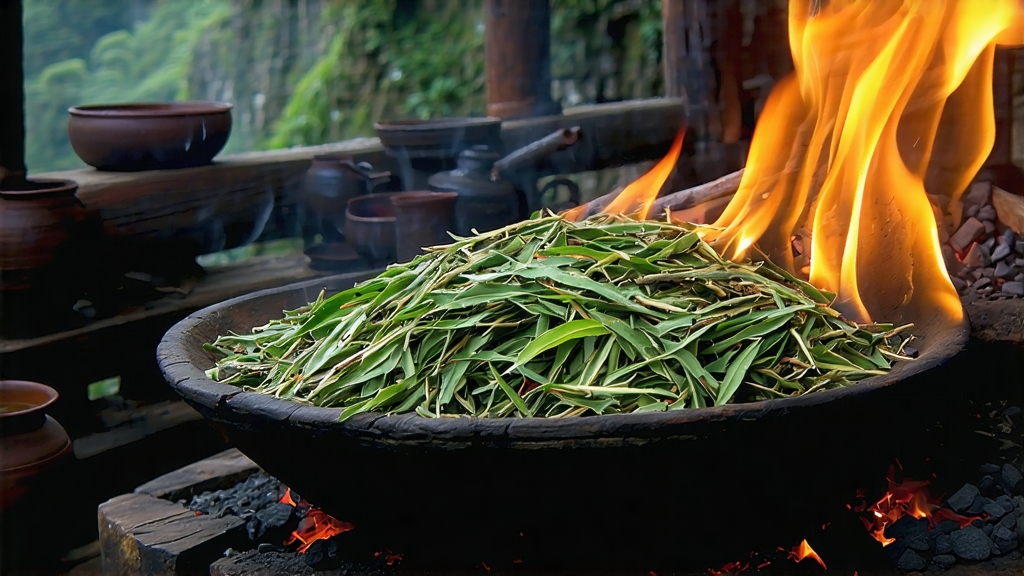
Ask most tea lovers to name a Chinese black tea and they will answer “Keemun” or “Yunnan Gold.” Few realize that the very first black tea ever created—long before those celebrated varieties—was Lapsang Souchong, born in the cool, bamboo-veined gorges of the Wuyi Mountains in northern Fujian. More surprising still, the original village version was never intended for export; it was a happy accident of wartime urgency, peasant ingenuity, and the fragrant heartwood of Masson pines. Today, four centuries after caravans carried it across the Russian steppe to the courts of Europe, Lapsang Souchong remains both controversial and adored: a tea that smells like campfire and tastes like dried longan, capable of converting coffee zealots and horrifying purists in the same sip.
History: From Refugee Crop to Romanov Luxury
The year 1646 was turbulent in southern China. Qing armies pressed south; Ming loyalists fled into the Wuyi range. Villagers in Tongmu, pressed for time, sped up tea drying by firing the leaves over open resinous pine logs. The smoke penetrated the leaf, turning it inky black and gifting it a scent no one had encountered. Local traders, reluctant to waste the crop, bartered it to passing Dutch merchants who shipped it to Java and then Amsterdam. Europe’s first taste of black tea was therefore not a delicate Keemun but this smoky Tongmu “bohea.” By 1669 the British East India Company listed it as “Lapsang Souchong,” lapsang deriving from the Fuzhou dialect lao xiang—“original smoke.” Catherine of Braganza’s dowry chest carried it to London; Tolstoy had it served in silver samovars; and in 1834 the Tsar’s court requested an entire harvest, paying in gold roubles and triggering the first recorded tea counterfeit—smoke-flavored Fujian oolong passed off as the real Wuyi leaf.
Terroir: Why Only Tongmu Tastes Like Tongmu
The Wuyi range is a UNESCO biosphere where granitic cliffs force moist air upward, creating perpetual mist that filters sunlight into a soft, silver diffusion. Day-night temperature swings can exceed 15 °C, locking amino acids into the leaf and forming the honeyed precursor that later marries with pine resin. Soil is a thin, acidic laterite laced with quartz; drainage is so rapid that tea roots plunge three meters in search of water, concentrating polyphenols. Within Tongmu there are micro-zones: Guadun, the highest hamlet at 1,200 m, produces the most nuanced leaf, while lower villages such as Miaowan yield a stronger tar note. Only 52 square kilometers enjoy Protected Geographic Indication status; step outside the watershed and the same cultivar, the same pine, the same craft, still fails to replicate the flavor.
Cultivars: Beyond the Myth of a Single Bush
Legends speak of a single “mother tree,” but DNA fingerprinting by the Fujian Academy of Agricultural Sciences shows at least five closely related Xiaozhong cultivars. The most prized is Xingcun Xiaozhong, a slow-budding strain with tiny, thick leaves that can withstand three rounds of heavy smoke without crumbling. A newer clonal selection, Wuyi #8, offers higher yield and brighter cup color but lacks the malt depth demanded by traditionalists. Farmers often plant a field blend, harvesting the bushes in three flushes—early April for perfumed tips, May for balanced body, and a rare late June “autumn spring” picked after a brief cool spell that intensifies sweetness.
Craft: The Eight Stages of Controlled Combustion
- Pluck: One bud, two leaves, dawn to 9 a.m. while dew still shields the leaf from bruising.
- Wither: Bamboo trays set above ground-level trenches; pine logs smolder 1.5 m below so leaf softens in warm, resin-laden air for 6–8 h.
- Rolling: 55 min on a cast-iron plate turned by hand; cell walls must crackle but remain intact for later smoke absorption.
- Oxidation: Locked wooden chests lined with wet cloth; 90 % humidity at 24 °C for 3 h turns leaf copper.
- First Smoke: A brick-lined pit,